#Battle of Dunkirk
Text
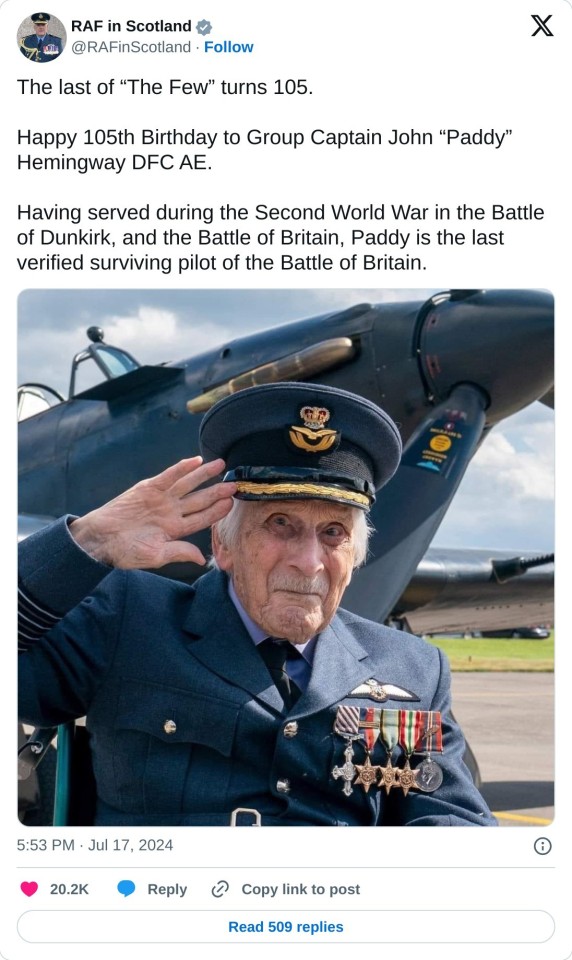

#RAF#Royal Air Force#Royal Air Force Scotland#World War II#war veteran#war#hero#Group Captain John “Paddy” Hemingway DFC AE#John “Paddy” Hemingway#Battle of Dunkirk#Battle of Britain#birthday#1900s#20th century#pilot
118 notes
·
View notes
Photo
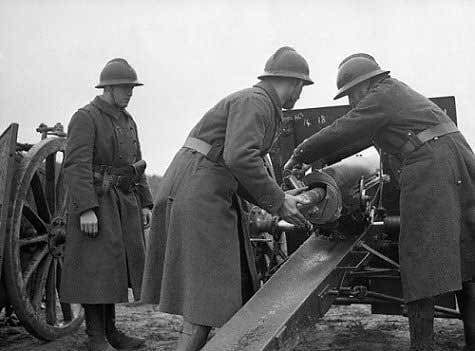
Canon de 75 mm servi par des soldats français pour couvrir l'évacuation de Dunkerque (Opération Dynamo) face aux allemands - Bataille de Dunkerque - 28 mai 1940
#WWII#Bataille de France#Battle of France#Bataille de Dunkerque#Battle of Dunkirk#Opération Dynamo#Dynamo operation#Evacuation de Dunkerque#Dunkirk evacuation#Armée française#French army#Artillerie#Artillery#Artillerie de campagne#Field artillery#Canon de 75 mm#Dunkerque#Dunkirk#France#28/05/1940#05/1940#1940
32 notes
·
View notes
Text
A New Time With Communication - May 30, 1940
Good day people of the world! As you can see by my typing, I'm in somewhat of a joyful mood today! You may think, "Oh Jane! Isn't it awful of you to say such things when your husband is out in battle?" Well technically yes, but I'm happy about another thing. If you didn't know, The Battle of Dunkirk has recently commenced a few days ago, so the army is now just a few days into battle. At first, I was worried about my husband again because this is his second time going into battle, and I was scared that he would get severe injuries.
But then I got amazing news from the Field Marshal in my husband's troop! Do you all remember how in my husband's first battle when he wasn't able to send letters? Well now he is! I'm so happy I can't contain myself! Maybe this can be a way for Archie to bond with his father! I've been using William's letters as stories in a way for Archie. I think that he really enjoys them because he always manages to fall asleep! I was sharing my excitement with William before he left but as usual he shrugged it off and just walked out of the house.
Oh my gosh what am I saying? I completely forgot to tell you about the letter he just sent me! Oh here I'll type it down for you.
To my dearest Jane,
I hope that you and Archie are doing wonderfully back home. I have just come back from a short attack on us by our opponents. It was such a wild experience! If you don't know, the Battle of Dunkirk is called that because we are currently in Dunkirk, which is a small coastal town in France. Our wonderful new Prime Minister Winston Churchill is leading us through this battle, and I believe he is doing an extraordinary job. Don't worry about my wounds/injuries and I because I'm completely fine. I may have acquired a few bumps and bruises (and gunshots)... but I'm fine. All that matters is that I'm serving our country and fulfilling my lifelong dream of becoming a Field Marshal. Some day... some day.
Sincerely,
William
0 notes
Text
The Battle of Dunkirk- Miracle of Dunkirk
#BattleeofDunkirk, #EvacuationofDunkirk, #miracleofDunkirk,
Evacuation Dunkirk May 26, 1940
The Battle of Dunkirk, which took place during World War II. Stands as a testament to the indomitable spirit of humanity in the face of adversity. It was a pivotal moment that showcased the bravery, resilience, and unity of the Allied forces as they faced overwhelming odds. In this blog post, we will delve into the events leading up to The Battle of Dunkirk.
The…
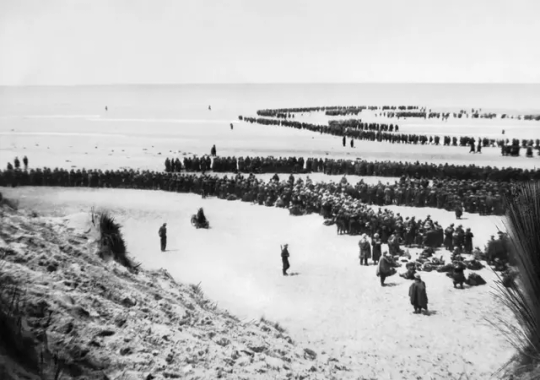
View On WordPress
#battle of dunkirk#battle of the dunkirk#dunkirk evacuation#dunkirk facts#dunkirk military leaders#miracle of dunkirk#operation dynamo#warpedia#world war II#ww2
0 notes
Text
Remember the Battle of Dunkirk: May–June 1940.

Not every victory means you won a battle. Sometimes a victory can be a well-executed retreat, and that’s exactly what happened during the Battle of Dunkirk in late May 1940. With the expeditious collapse of French resistance against German forces during the Battle of France, British troops found themselves trapped in Dunkirk, a town in Northern France. A massive effort of both military and civilian vessels successfully ferried 338,000 British Expeditionary Force members across the channel to Britain. The maneuver became known as the “Miracle at Dunkirk,” and it proved a powerful rallying cry for the dark days ahead.
The greatest aid in the ally’s escape strangely came from Adolf Hitler himself, who, likely fearing an Allied counterattack, halted Nazi armored forces bearing down on Dunkirk for two days. Those 48 hours were vital in the Allied effort to rescue the soldiers cornered on the European continent. Although buoyed by the retreat, Winston Churchill also countered with a dose of reality that hard fighting was still ahead, saying “we must be very careful not to assign to this deliverance the attributes of a victory … Wars are not won by evacuations.”
[Bonus: Lost Winston Churchill Essay Argues That Aliens Exist]
0 notes
Text
Also PLEASE put your reasoning in the tags. I had a blast reading everyone's comments from the last poll!
#cillian murphy#robert fischer#shivering soldier#inception#dunkirk#polls#my polls#battle of the traumatized sweethearts
36 notes
·
View notes
Text









"i'm on him"
COLLINS & FARRIER
→ my top 50 fiction dynamics [4/50]
22 notes
·
View notes
Text
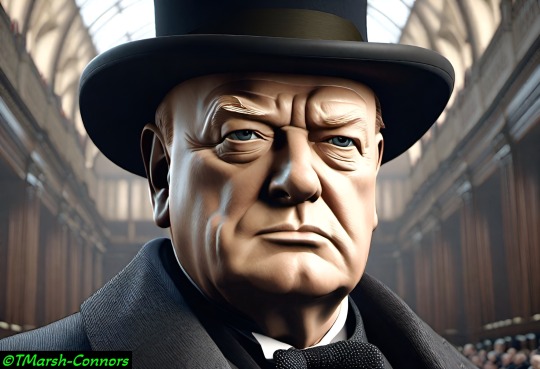


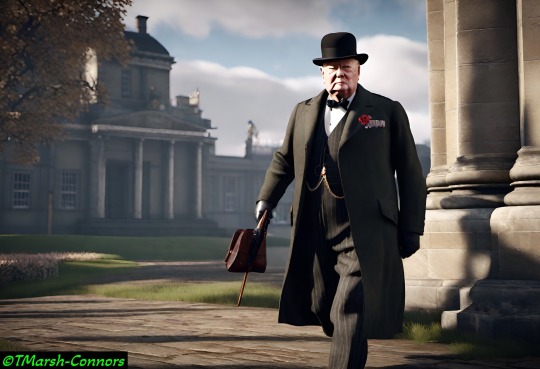

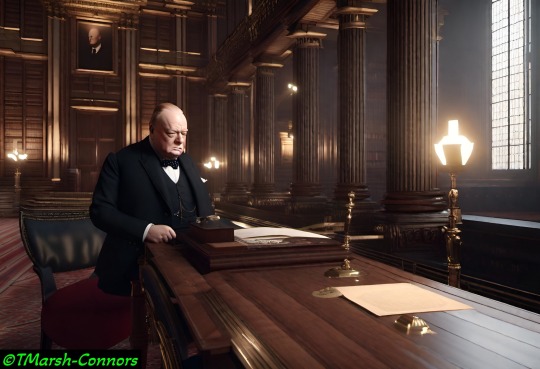


Sir Winston Leonard Spencer Churchill was a British statesman, soldier, and writer who served as Prime Minister of the United Kingdom twice, from 1940 to 1945 during the Second World War, and again from 1951 to 1955.
#British Prime Minister#World War II#Leadership#Orator#Statesman#British History#Iron Curtain#Allies#Speeches#War Strategist#Political Figure#Nobel Prize in Literature#Conservative Party#Cold War#V for Victory#Dunkirk Evacuation#Churchillian#Historical Figure#British Empire#Battle of Britain
13 notes
·
View notes
Text
Purley schoolboy who reached for the sky in Battle of Britain
SUNDAY SUPPLEMENT: The Minster archives are full of accounts of those who gave their lives in the world wars. DAVID MORGAN recounts the story of one, a fighter pilot who just might have been memorialised in a famous movie
Reach for the sky: Hurricane fighter aircraft on patrol during the Battle of Britain
While I was searching for information about the 80th anniversary of the Croydon Operatic and…

View On WordPress
#302 (Polish) Squadron#A Matter of Life and Death#Battle of Britain#CODA#David Niven#Dunkirk#Kempton Park#Peter Carter#RAF#Remembrance Day#Winston Churchill
0 notes
Text

The last of “The Few” turns 105.
Group Captain John “Paddy” Hemingway DFC, AE, is the last verified surviving pilot of the Battle of Britain. He was born in Dublin on 17 July 1919.
He served during the Second World War in the Battle of Dunkirk, the Battle of Britain, the Allied invasion of Italy and the Invasion of Normandy. Following the death of Terry Clark in May 2020, Hemingway became the last verified surviving airman of the Battle of Britain. He was shot down four times during the Second World War.
Per Ardua ad Astra - "Through Adversity to the Stars"
1K notes
·
View notes
Text
Sergeant George Booth, a twenty-nine-year-old observer with the RAF's No.107 Squadron, is usually credited as the first Briton to be taken prisoner in the Second World War. Booth's war ended the day after it had officially begun when his Bristol Blenheim was shot down over the German coast on 4 September 1939. The pilot was killed by the Wireless Operator, Air Gunner Larry Slattery, survived and, together with Booth, spent the next six years in captivity. They were among an estimated 170.000 to 200,000 British, Commonwealth and Empire men who were taken prisoner in Europe during the Second World War. This compares to the 90,000 Allied prisoners who were held in around a thousand camps around the Far East after Japan entered the war in late 1941.
Booth and Slattery left behind a country that was just embarking on what became known as the 'Phoney War' – when the population held its breath, waiting for a bombing onslaught that failed to appear. The first major influx of British POWs into German camps began nine months later in June 1940 when that phoniness gave way to a Blitzkrieg – or lightning war – as the Nazis swept down through the Low Countries into northern France. As the British Expeditionary Force (BEF), which had been sent to defend France, was evacuated from Dunkirk and other ports it was forced to abandon over 50,000 men who would spend the rest of the war as POWs. They entered captivity knowing that Britain faced the threat of invasion and that, if Hitler was successful, they were unlikely ever to see their homes again.
Each major Allied defeat made more men POWs. Germany's invasion of Greece and Yugoslavia in April 1941 was followed by the battle for Crete after which 11,370 Allied troops were captured in May 1941. The next big wave of POWs arrived from North Africa where Rommel was notching up significant victories. When he finally managed to break the siege of the Libyan port of Tobruk in June 1942, the garrison's 35,000 men, many of whom were South Africans, lost their freedom.
Since America did not enter the war until after Japan bombed Pearl Harbor in December 1941 only 62,000 of her soldiers became POWs in Europe. Most American POWs before D-Day were airmen. Soldiers began to be taken in large numbers when the Allies landed in Italy in 1943 and Normandy in 1944 and began to claw back parts of occupied Europe. The Germans captured over 6,000 men in September 1944 as a result of Operation Market-Garden when the Allies tried to establish a bridgehead across the Rhine at Arnhem; Hitler's surprise attack on the Ardennes (also known as the Battle of the Bulge) in a bitterly cold December 1944 led to around 23,000 Americans becoming POWs.
Most prisoners were soldiers. The nature of sea battles meant that few men serving in the Royal or Merchant Navy survived to becomes prisoners or internees – about 5,500 from each category. Around 13,000 British and Commonwealth airmen and 33,000 US airmen became POWs but their experience was very different from the other services. Of the 10,000 members of Bomber Command (about eight per cent of its total) who became POWs, many started their day with a British breakfast on British soil, and ended it in a cell where the enemy was keen to extract as much information from them as possible. The RAF did not suffer anything like the military setbacks of Dunkirk or North Africa and the peak year for Bomber Command was 1943-44 when 3,596 of their members became prisoners.
Becoming a prisoner in 1944 or 1945 felt quite different from becoming a POW in the early days of the war. Although the later prisoners had a sense that the war was drawing to a conclusion and that the Allies were winning, they still faced an uncertain future. Would they become hostages or even suffer execution at the hands of an enemy who felt he had nothing to lose?
— The Barbed-Wire University: The Real Lives of Allied Prisoners of War in the Second World War (Midge Gillies)
#book quotes#midge gillies#the barbed-wire university: the real lives of allied prisoners of war in the second world war#history#military history#naval history#aviation history#prisoners of war#ww2#phoney war#battle of france#dunkirk evacuation#britain#usa#germany#nazi germany#george booth#larry slattery#royal navy#merchant navy (uk)#raf
1 note
·
View note
Text
🌟Wintering | Yuletide🌟
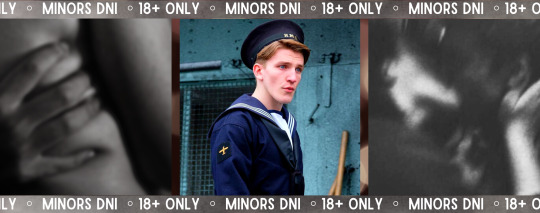
Tom Bennett x fem!Reader
Summary: The war is over and Tom Bennett returns home, seeking comfort in a friend from his past.
Content Warnings: Drabble, Language, Smut (p in v, oral!f receiving).
Yuletide Masterlist

Wintering, verb. To hide, hibernate, seek comfort or rest, especially after turbulent times (in humans).
“Fuck,”
Your back was beginning to ache. You hadn’t given a moment’s thought as to where you were when you’d burst through the door. Just being at home, away from prying eyes, was enough. Now, the dado rail was bruising the base of your spine with every harsh thrust.
“Fuck,” he hissed again in your ear, immediately silencing himself by covering your mouth with his own. The warmth, the wetness, was delicious.
“Tom, please,” you whined into his mouth. Even through the dull pain in your back, your legs hooked around his waist ever tighter. At your plea he looked down at you, his hips still rolling lazily. When he saw the scrunch of your eyebrows, the sheen of sweat above them, and the way your lower lip pillowed as you bit down on it, Tom Bennett grinned.
He continued grinning as his hips began pistoning at an unholy pace into your wet heat. That wolfish smile was the last thing you saw as your eyes finally closed, too overwhelmed by pleasure to stay open, as you threw your head back against the wall. Bastard. He knew he was good.
You’d heard at the dancehall last night that the final battleship into port, the HMS Valiant, was due to arrive the following day at around 3 o’clock. You also knew, from working with Lois on the ambulances, that this was Tom’s ship. When Mrs Beatty and a few other ladies from your mother’s Women's Institute suggested meeting the last of the lads to come home at the dock, the idea spread through your Manchester suburb like wildfire.
No sooner had your mother come home with the news were you being bustled onto the number 54 bus with a hamper laden with fresh clothes, bottles of beer, spam sandwiches and the little change that each family could spare. Old men, and women of all ages, piled into the buses and made their way to the docks. A few families still had bunting from the King’s jubilee and strung it from dockyard cranes.
The furore was extraordinary. The battleship was already looming large on the horizon when you all emptied from the bus, and young and old cheered themselves hoarse until the ship made its way into port. Sailors, forgetting regulations, leant over the ships’ railings and waved to family and friends. When the battleship finally docked, it let out a long blast of its horn and the crowed roared with glee. Mothers and sweethearts were already crying when the gangway was let down, and you saw that even some fathers were wiping their eyes.
You watched with relief as faces you recognised filed off the boat. Mr Martin’s only surviving son, thirty-eight and with three children who each ran into his arms. Frank Smith, the school bully’s rat-faced sidekick. The lad that worked at the corner shop, nineteen now, having received his papers the day he turned eighteen. Each was greeted by their family members and someone with a ‘welcome home’ hamper.
All, except one. Tom Bennett, one of the tallest lads on the boat, walked down the gangway in a few elegant strides and stopped on the dock with a sigh as he hitched his kitbag over his shoulder. He lifted his eyes to the sky, the October afternoon already darkening to a mournful blue.
As with the rest of the young men, the war had not been kind to him. Shadows haunted his slim face, prematurely aged from the horrors of a war none of them should have fought. At home, he was the stuff of legend. Survived the battle of River Plate, Dunkirk and went on the run in Europe, only to be sent back to war the moment he returned. More lives than the luckiest of cats, your mother said. The worst, of course, was the loss of his father and his home. The grief hit the Bennett children hard. Tom Bennett jumped onto the first battleship in dock, and Lois left baby Vera in England to go nursing in Africa. Now, Tom Bennett stood on the dock with no-one to welcome him home after six long years.
You hurried forward.
“Tom-” As though he knew you were there before you even spoke, he looked down from the sky to your flushed face.
Though he said your name quietly, a smile flashed across his boyish face. Your stomach somersaulted. He’d always been the handsomest rogue in Longsight, and still was with his blue eyes and sandy hair. At least there was one thing the war hadn’t taken away from him.
You held out the hamper. “Welcome home, Tom,” and with a sincere smile you stood on tiptoe to kiss his sallow cheek. A faint lipstick smudge lingered there and you smiled all the more.
“I’d be flattered,” Tom teased, gesturing to the hamper. “If every other Tom, Dick and Harry didn’t have one too.” He laughed as he took the hamper from you. His large palm covered your own and you shivered.
There was history there. Only a few pages, but history nonetheless. At once, you were transported back to the parish dance of 1935. Both seventeen, you as green as the grass, he already-world weary and wandering. He danced with no-one the entire night, though many a girl looked hopeful, yet took your hand for the last dance. When you thought about those innocent years before the war, in the darkest hours of the night or after a few too many sherries, you swore you could feel Tom’s hands burning against your waist, and at your neck as he kissed you. Your first.
Tom too, was remembering the first moment you touched him. A maths lesson with Miss Greene. He’d been caught flicking pencil sharpenings into girls’ hair and was sent to sit in the corner at the back of the class. You, as much a sweetheart then as you were now, were tasked with handing out textbooks. Unfortunately for you and luckily for Tom, they were on the shelf above where he sat. A cocky grin on his face, Tom didn’t move. He loved winding the girls up, and you were something different. At sixteen, you were curvier than the rest, and watching you flush pink was his favourite hobby. And so, he didn’t move. With pride, he chortled as you blushed and reached for the textbooks above him. His smug smile faltered however when, in order to reach the books, your legs came to rest on each side of his spread ones. With one of your thighs either side of his, he swallowed. He could feel the heat coming from the apex between them, smell your perfume and feel the way the soft flesh pressed against his. When you finally retrieved the books, it was your turn to smirk at the red flush peppering his cheekbones.
“Where are you staying, Tom, now you're back?” You asked, voice low. Your mother was not far away.
“Bench in the pub, presumably. Most of the lads are heading that way for a party. Then I’ll find meself lodgings above some dodgy back-alley business.” He huffed a humourless laugh. You looked him directly in the eye.
“Stay out ours tonight.”
Tom leant close to you, wetting his lips. “What would mother say?”
“Don’t know, she’ll be down pub with the rest of them. Loves a sherry and a sailor.”
Half an hour later, you were pressed against the wall of your mother’s hallway, Tom Bennett lapping hungrily at your slick centre. Beneath your skirt and petticoat, the lewd sounds of his tongue against your wet sex filled the quiet evening.
Now, buried to the hilt within you, his swollen head bullying your core, Tom forgot the last seven months he’d spent living on the Valiant. Forgot the suffering of the last six years entirely. For between the softness of your thighs, the scent of your neck as he tucked his face against it tenderly, he’d found, if for a moment, the thing he’d been fighting for. Warmth, kindness, rest. A place to winter.

The usual suspects: @arcielee @targaryenrealnessdarling @theoneeyedprince @ewanmitchellcrumbs @ellrond @cyeco13 @babyblue711 @exitpursuedbyavulcan @humanpurposes @myfandomprompts @barbieaemond @anjelicawrites
#ewan mitchell#tom bennett#tom bennett x reader#ewan mitchell x reader#world on fire#hilde's twelve days of christmas
266 notes
·
View notes
Text

Flying Officer B.P. “Squirrel” Nutkin of 266 Squadron RAF, seen here in a Hawker Hurricane Mk I flown by 266 during the Fall of France.
As the British Expeditionary Force were driven back by Guderian’s Blitzkrieg, 266 was badly mauled while keeping Luftwaffe bombers away from the Dunkirk beaches, losing enough Hurricanes that it re-equipped with the Supermarine Spifire Mk Ia just in time for the Battle of Britain.
Nutkin, resisting what was already becoming known as "Spitfire Snobbery", was one of the last 266 Squadron pilots to convert from his Hurricane. This snapshot, therefore, must have been taken at some time in mid-June 1940, between the end of Operation Dynamo on 4th June and the official start of the Battle of Britain on 10th July.
*****
It was during the BEF’s final withdrawal from Dunkirk that Flying Officer Nutkin, already with two kills to his credit, made ace in an afternoon and won his first DFC.
He was section leader of Red Section - comprising himself, Pilot Officer Tom E. Brock and Pilot Officer J.R.M.E. Fisher - providing top cover for the evacuation, when on 2nd June 1940 they found themselves up-sun from a raid directed against several of the “Little Ships” (civilian vessels with volunteer crews).
Red Section executed a perfect “bounce” that caught the enemy completely off guard, six Luftwaffe aircraft were shot down, and Nutkin personally accounted for two Junkers Ju.87-B Stuka dive-bombers as well as one Messerschmitt Bf.109-E4 from their escort.


(Representative images, not actual footage)
“Squirrel” Nutkin finished his RAF service in 1946 with the rank of Wing Commander. It’s widely believed he was promoted no higher after saying “Nuts!” to Air Vice-Marshal Trafford Leigh-Mallory, even though this turned out not to have been an insult, merely a misheard comment about which bar snacks were running short in the Officers' Mess.
Regardless of explanation, Leigh-Mallory - always notoriously pompous about his own image and reputation - made a disparaging entry in Nutkin’s file and refused to amend it. His later death in an accident meant the unwarranted black mark was never deleted.
This didn't concern post-war fledgling new airline BEA (British European Airways), and Nutkin joined them directly he left the Air Force…

…going on to become one of their senior captains before transferring to Transatlantic service with BOAC (British Overseas Airways Corporation).
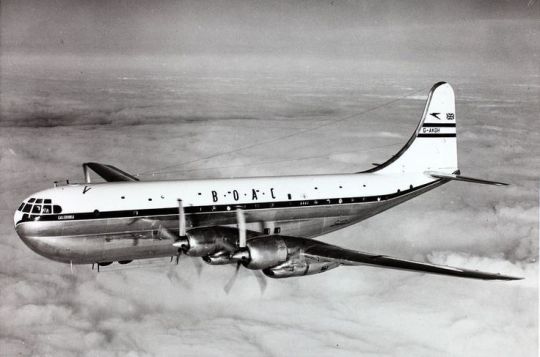
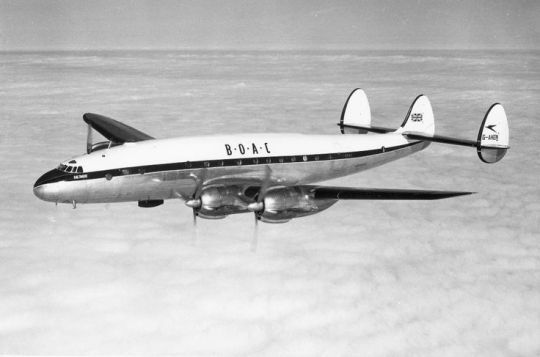
During a layover in New York he met and later married Cicely van Gopher of the New Hampshire van Gophers, and on retirement from flying made a fortune in forestry.
“Some people can’t see the wood for the trees, but for some reason I'm quite good at both.”
106 notes
·
View notes
Text
An updated (April 3, 2024 7:48am pst) list of WW2 movies and TV shows in chronological order
thought out WW2
-(Imitation Game 2014)
-(The Book Thief 2013)
-(The Zookeeper’s Wife 2017)
-(The Pianist 2002)
1937
October 26, 1937 Defence of Sihang Warehouse (The Eight Hundred 2020)
December 13, 1937 Nanjing Massacre
- (John Rabe 2009)
- (The Flowers of War 2011)
1938
Fall of 1938 (Munich – The Edge of War 2022)
1939
Summer 1939 (Six Minutes to Midnight 2020)
September 3, 1939 King George VI first wartime speech (King’s Speech 2010)
September 17, 1939, Soviet Union Invitation of Poland (The Way Back 2010)
November 30, 1939 Soviet Union invades Finland (The Winter War 1989)
1940
April 9, 1940 Operation Weserübung
-(April 9th [movie] 2015)
-(King’s Choice 2016)
-(Narvik 2022)
-(War Sailors 2023)
April 27, 1940 (Into the White 2011)
June 4, 1940
-Churchill gives “We Shall Fight on the Beaches” speech (Darkest Hour 2017)
-Dunkirk Evaluation (Dunkirk 2017)
July 10-October 31, 1940 Battle of Britain (Battle of Britain 1969)
1941
May 1941 (Call to Spy 2019)
June 22, 1941 Operation Barbarossa
-(Fortress of War [The Brest Fortres 2010)
-(Defiance 2008)
September 8, 1941, Siege of Leningrad begins.
-(Battle of Leningrad [Saving Leningrad] 2019)
-(Leningrad 2009)
October 1941 Battle of Moscow (The Last Frontier [The Final Stand] 2020)
October 1941 Battle of Sevastopol (Battle for Sevastopol 2015)
December 7, 1941, the Empire of Japan attacks Pearl Harbor (Tora! Tora! Tora! 1970)
December 8, 1941 Japan invades Shanghai International Settlement (Empire of the Sun 1987)
1942
January 20, 1942, Wannsee Conference (Conspiracy 2001)
February 1942 Battle of the Atlantic (Greyhound 2020)
February 1942 (The Railway Man 2013)
February 19, 1942, Bombing of Darwin (Australia 2008)
Spring 1942 (U-571 2000)
April 18, 1942 The Doolittle Raid (In Harm’s Way 2018)
June 4, 1942 Battle of Midway (Midway 2019)
1942 Summer Occupation of Jersey Island (Another Mother’s Son 2017 Prime)
July, 10 1942 Easy Company Trains in Camp Tocca (Band of Brothers 01x10 Currahee 2001)
July 21, 1942, Kokoda Track Campaign (Kokoda: 39th Battalion 2006)
August 7, 1942, 1st Marine Division land on Guadalcanal (The Pacific Ep. 1 Guadalcanal/Leckie 2010)
August 19, 1942, Dieppe Raid (Dieppe 1993)
August 23, 1942 Battle of Stalingrad begins (Stalingrad 1993)
September 1942 Formation of Troop 30 (Age of Heroes 2011)
September 18, 1942, 7th Marines Land on Guadalcanal (The Pacific Ep. 2 Basilone 2010)
Autumn of 1942 Battle of the Atlantic (Das Boot 1981)
October 18, 1942, Operation Grouse (Heavy Water War Ep. 2 2015)
November 8, 1942, Operation Torch (The Big Red One 1980)
November 10-17 1942 Vasily Zaytsev kills 225 German Soldiers during the Battle of Stalingrad (Enemy at the Gates 2001)
December 1942 The 1st Marine Division on Guadalcanal is relieved (The Pacific Ep. 3 Melbourne 2010)
December 15, 1942, Battle of Mount Austen (Thin Red Line 1998)
1943
March 13-14 1943, liquidation of the Kraków Ghetto -(Schindler’s List 1993)
April 17, 1943 Operation Mincemeat (Operation Mincemeat 2021)
April 19, 1943, beginning of the Warsaw Uprising (Uprising 2001)
May 4, 1943, Final Mission of The Memphis Bell (Memphis Bell 1990)
May 15, 1943, Salamo Arouch and his family arrive in Auschwitz Concentration Camp (Triumph of the Spirit 1989)
May 27, 1943 Louis Zamperini plane crashes on a search and rescue mission (Unbroken 2014)
May 30, 1943 first All-American Girls Professional Baseball League game played (A League of Their Own 1992)
June 25, 1943, 100th Bomb Group flew its first 8th Air Force combat mission (Master of the Air: Part One 2024)
July 1943
-(The Tuskegee Airmen 1995)
-(The Liberator Ep. 1 2020)
-(Heavy Water War Ep. 5 2015)
July 16, 1943, The 100th Bomb Group bombed U-Boats in Tronbhdim (Masters of the Air: Part Two 2024)
August 17, 1943 the 4th Bomb Wing of the 100th Bomb Group bombed Regenberg (Masters of the Air: Part Three 2024)
September 16, 1943, William Quinn and Charles Bailey leave Belgium (Masters of the Air: Part Four 2024)
September 18, 1943 John ‘Bucky’ Egan returns from leave to join the mission to bomb Munster (Master of the Air: Part Five 2024
October 14, 1943, John ‘Bucky’ Egan interrogated at Dulag Lut, Frankfurt Germany (Masters of the Air: Part Six 2024)
December 26, 1943, 1st Marine Division lands on Cape Gloucester (The Pacific Ep. 4 Gloucester/Pavuvu/Banika 2010)
1944
January 22, 1944, Battle of Anzio
-(The Liberator Ep. 2 2020)
-(Red Tails 2012)
-(Anzio 1968)
February 20, 1944, Hydro Ferry bombing (Heavy Water War Ep. 6 2015)
March 7, 1944, Stalag Luft III Sagan, Germany, Germans find the concealed radio Bucky was using to learn news of the War (Master of the Air: Part Seven 2024)
March 24/25, 1944 Allied Mass Escape of Stalag Luft III (The Great Escape 1963)
June 1944 (Cross of Iron 1977)
June 6, 1944, 00:48 & 01:40 First airborne troops begin to land on Normandy (Band of Brothers 02x10 Day of Days 2001)
June 6, 1944, 06:30 D-Day landings
-(Storming Juno 2010)
-(Saving Private Ryan 1998)
June 10, 1944, Easy Company Takes Carentan (Band of Brothers 03x10 Carentan 2001)
June 15-July 9, 1944 Battle of Saipan
-(Windtalkers 2002)
-(Oba: The Last Samurai 2011)
July, 1944 The Monuments Men land in Normandy (The Monuments Men 2014)
July 20, 1944 Operation Valkyrie (Valkyrie 2008)
August 12, 1944, The 332nd Fighter Group attack Radar stations in Southern France (Masters of the Air: Part Eight 2024)
September 15, 1944, U.S. Marines landed on Peleliu at 08:32 (the Pacific Ep. 5 2010)
September 16, 1944, U.S Marines take Peleliu Airfield (the Pacific Ep. 5 2010)
September 17, 1944, Operation Market Garden
-(Band of Brothers 04x10 Replacements 2001)
-(A Bridge Too Far 1977)
October 2, 1944 Battle of Scheldt (Forgotten Battle 2021)
October 12, 1944, Battle of Peleliu, Assault on Bloody Nose Ridge (the Pacific Ep. 7 Peleliu Hills 2010)
October 13, 1944, Rovaniemi public buildings were destroyed (Sisu 2022)
October 14, 1944, Erwin Rommel is arrested (Rommel 2012 Prime)
October 22/23, 1944, 2100 – 0200 Operation Pegasus (Band of Brothers 05x10 Crossroads 2001)
November 1944 middle of the Battle of Hürtgen Forest (When Trumpets Fade 1998)
December 16, 1944, Battle of the Bulge (Band of Brothers 06x10 Bastogne 2001)
December 1944 (Hart’s War 2002)
1945
January 2, 1945 (The Liberator Ep 3 2020)
January 10, 1945 (Attack Force Z)
January 13, 1945, Battle of Foy (Band of Brothers 07x10 The Breaking Point 2001)
January 30, 1945 The Raid at Cabanatuan (The Great Raid 2002)
February 14, 1945, David Webb rejoins the 506th in Haguenau (Band of Brothers 08x10 The Last Patrol 2001)
February 19, 1945, Battle of Iwo Jima starts.
- (Letters from Iwo Jima 2006)
- (The Pacific Ep. 8 Iwo Jima 2010)
- (Flags of our Fathers 2006)
March 21, 1945, Operation Carthage (The Bombardment 2021)
April, 1945 (Fury 2014)
April 5, 1945, 506th Finds abandoned Concentration Camp
(Band of Brothers 09x10 Why We Fight 2001)
April 26, 1945, near the end of the war in Europe (A Woman in Berlin 2008)
April 29, 1945, 45th Infantry Division liberated Dachau Concentration camp (The Liberator Ep. 4 2020)
May 2, 1945, Fall of Berlin
-(Downfall 2004)
-(Jojo Rabbit 2019)
May 1945 Battle of Okinawa
-(Hacksaw Ridge 2016)
-(The Pacific Ep. 9 Okinawa 2010)
May 7, 1945, Germany Surrenders V-E Day
- (Master of the Air: Part Nine 2024)
- (Band of Brothers 10x10 Points 2001)
July 30, 1945, USS Indianapolis sank.
(USS Indianapolis 2016)
August 15, 1945, The Empire of Japan surrenders end of the War.
-(Oppenheimer 2023)
-(The Pacific Part Ten: Home 2010)
September 11, 1945 US Military search and Arrest Japanese Leaders for war crimes (Emperor 2012)
1946
April 29, 1946 Tokyo War Crimes Tribunal (Tokyo Trial 2016)
70 notes
·
View notes
Text
Please read the movie descriptions below
Saving Private Ryan (1998) - Following the Normandy Landings, a group of U.S. soldiers go behind enemy lines to retrieve a paratrooper whose brothers have been killed in action. Dir. by Steven Spielberg
A League of Their Own (1992) - American sports comedy drama film that tells a fictionalized account of the real-life All-American Girls Professional Baseball League (AAGPBL) during WWII. Dir. by Penny Marshall
Greyhound (2020) - The film is based on the 1955 novel The Good Shepherd, and follows a US Navy commander on his first assignment commanding a multi-national escort destroyer group of four, defending an Allied convoy from U-boats during the Battle of the Atlantic. Dir. by Aaron Schneider
Mudbound (2017) - The film depicts two World War II veterans – one white, one black – who return to rural Mississippi each to address racism and PTSD in his own way. Dir. by Dee Rees
Twelve O'Clock High (1949) - A tough-as-nails general (Gregory Peck as General Savage) takes over a B-17 bomber unit suffering from low morale and whips them into fighting shape. Based on a novel by the same name. Dir. by Henry King
The Best Years of Our Lives (1946) - three United States servicemen re-adjusting to societal changes and civilian life after coming home from World War II. The three men come from different services with different ranks that do not correspond with their civilian social class backgrounds. It is one of the earliest films to address issues encountered by returning veterans in the post World War II era. Dir. by William Wyler
The Monuments Men (2014) - An unlikely World War II platoon is tasked to rescue art masterpieces from German thieves and return them to their owners. Based on the 2007 non-fiction book The Monuments Men: Allied Heroes, Nazi Thieves and the Greatest Treasure Hunt in History. Dir. by George Clooney
Dunkirk (2017) - Allied soldiers from Belgium, the British Commonwealth and Empire, and France are surrounded by the German Army and evacuated from Dunkirk. It is shown from the perspectives of the land, sea, and air. Dir. by Christopher Nolan
Fury (2014) - A grizzled tank commander makes tough decisions as he and his crew fight their way across Germany in April, 1945. Dir. by David Ayer
Valkyrie (2008) - A dramatization of the July 20, 1944 assassination and political coup plot by desperate renegade German Army officers against Adolf Hitler during World War II. Dir. by Bryan Singer
50 notes
·
View notes
Text

1940 05 Westland Lysander MkIII - box art Italeri
The Westland Lysander was a short take off and landing (STOL) aircraft that was initially employed in the forward observer/artillery spotter/army cooperation role. It would later provide air support for what would subsequently be called covert operations in Occupied Europe. It first flew on June 15, 1936 and was a factor in the post-war development of a STOL requirement by the world’s major air forces. Entering service with the Royal Air Force in June 1938, its design was significantly influenced by the German Henschel Hs 126, a similar aircraft in the Luftwaffe inventory. The Lysander was fully operational with No. 16 (Army Co-operation) Squadron at the time of the Munich Crisis in September 1938, and began the R.A.F’s process of phasing out its then designated artillery spotter aircraft, the Hawker Hector bi-plane.By the time war broke out a year later, it was in service with seven squadrons, six of which deployed to France in the first months of the war (Nos. 2, 4, 13, 26, 613 and 614). When hostilities in the West began in earnest in May 1940 with Germany’s invasion of France and the Low Countries, Lysanders began reconnaisance and artillery spotting operations, with Nos. 2 and 4 Squadrons re-deploying to Belgium.On occasion, Lysanders gave a surprisingly good account of themselves when pitted against state-of-the-art German fighters. In one action, a group of Lysanders was attacked by six Messerschmitt Bf 110s over Belgium, and the rear gunner of one of them, L.A.C. Gillham, shot down one of the 110’s, before his pilot could escape at low level. In the coming weeks, Lysanders were frequently set upon by Bf 109’s, particularly when unescorted by their own fighters. While not fast, they were highly manueverable; if they were lucky, they would escape with mere battle damage. But between May 10 and May 23, 1940, nine crews and 11 aircraft were lost to enemy action. On the 25th still more were caught on the ground in a strafing attack at Clairmarais and destroyed.By the time of the Dunkirk evacuation, the Lysander squadrons had been decimated, having virtually no serviceable aircraft. Often their crews flew against intimidating odds, being called upon to air drop supplies without fighter escort to British or French troops, or provide ground support with their loads of 40 lb. bombs, all in skies increasingly dominated by the Luftwaffe. They inflicted damage along the way; on May 22 Flying Officer Dodge shot down a Henschel Hs 126 with his forward machine guns, while his rear gunner downed a Junkers Ju 87 Stuka. But this was the exception. Of 174 aircraft deployed to France, 88 were lost in air combat and 30 more destroyed on the ground by the time the French capitulated.
After Dunkirk, contemplating a loss rate of 63 percent, the RAF had little choice but to withdraw the Lysander from front line service — at least for daytime operations. The Lysander would go on to its greatest fame as the aircraft of choice for Special Operations Executive, a covert auxiliary of (and competitor to) the British Secret Intelligence Service (SIS), charged by Winston Churchill with covert operations in the Occupied Countries and a mandate to “set Europe ablaze.” Soon, on a regular basis, Lysanders of No. 138 Squadron (Special Duties), painted matt black, inserted agents and their weapons, ammunition, explosives and other supplies, and withdrew shot-down airmen. Sometimes they withdrew people wanted by the Gestapo, or brought Resistance leaders back to London for briefings. Lysanders would later be used by both the British Commandos and the American Office of Strategic Services on similar operations in Europe and the Far East.
Landing in unprepared clearings or meadows at night, the landing ground identified by small torches lit by members of the Resistance, Lysanders helped sustain hope in Occupied Europe and Asia. By 1942 they were equipped with larger fuel tanks (starting with the Mk. IIIa) to allow penetration deeper into France, and their ladders touched up with flourescent paint to allow quicker ingress and egress from the plane. There was constant danger – one on occasion, a Lysander guided to a landing by torches touched down, only to be met by German machine gun fire. The pilot, Squadron Leader Conroy, slammed the throttle open and struggled to get airborne, stemming the blood from a neck wound by clamping his hand over it. Brushing the treetops at the edge of the landing field, he managed to return safely to England.
In the Middle East, Lysanders were able to operate longer in their original roles of artillery spotting and reconnaisance since Axis fighter aircraft were not as readily available. In Palestine, they flew throughout 1940 doing aerial blackout inspections, coastal watch, and general co-operation with the Palestine Police. In North Africa, No. 6 Squadron was deployed to Libya and was ordered to remain in Tobruk when the British retreated from Rommel’s Afrika Korps, providing close air support over the beseiged garrison, which continued to hold out. During the war, Lysanders were operated by Britain, France, Ireland, Canada, Finland, Egypt, and South Africa. By war’s end they were a rarity, except in Canada, where relatively large numbers of them persisted until the 1950’s.
34 notes
·
View notes